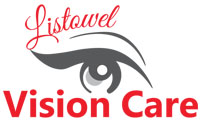What is presbyopia?
Presbyopia is a normal aging change in which the crystalline lens of your eye increases in size and loses its elasticity and flexibility. This results in an inability to focus on objects up close.
At what age does presbyopia occur?
The age at which presbyopia starts varies from person to person. Although presbyopia may seem to develop suddenly, the actual decline takes place over the course of many years. It usually becomes apparent to people in their early to mid-forties, initially resulting in difficulty seeing very fine print up close or in poor lighting. The changes in the lens continue to progress until the late 40s and early 50s, to a point where objects within an arm’s length cannot be viewed clearly without reading glasses.
Signs and symptoms
Some signs and symptoms of presbyopia include:
• The need to hold reading materials further away from the eyes.
• Blurred vision at a normal reading distance.
• Difficulties reading in dim light.
• Eye fatigue and headaches when attempting to do close work.
• Lingering blur when trying to refocus at different viewing distances.
Prevention
Presbyopia is a natural part of the aging process and cannot be prevented.
Diagnosis
A comprehensive eye examination by an optometrist will include testing to determine the quality of your near vision, and the diagnosis of presbyopia, if present.
Treatment
To compensate for presbyopia, optometrists prescribe:
• Reading glasses,
• Bifocals, trifocals, progressives
• Contact lenses
Other common vision conditions like nearsightedness, farsightedness and astigmatism can be complicated by the visual demands associated with presbyopia. Your optometrist will discuss your visual demands with you and perform other tests to determine the specific style of lenses that will allow you to see clearly.
Monovision
Contact lenses and laser surgery can be used to provide “monovision” for patients. By doing this, the dominant eye is corrected for distance vision and the non-dominant eye is corrected for near vision. Monovision works well for some people, but not everyone. People who require good distance visual acuity with both eyes, such as pilots or police officers, may not be suitable candidates for monovision. The same is true of graphic designers and writers who require good near vision. Your optometrist can discuss monovision with you to help determine if this is the right option for you.
Will I have to wear glasses all the time?
This will depend on a number of factors, including any other vision conditions you have. You may only need your glasses for reading, computer use or other close work. However, you may find wearing glasses all the time is more beneficial and convenient for your visual demands. This is especially true if your activities involve multi-tasking at a variety of distances. In these circumstances, multifocals may be the best choice.
Can I still wear contact lenses?
You will likely be able to wear contact lenses part-time or full-time, depending on your prescription and your daily visual needs. Your optometrist will tell you about your options and help you decide what is best for you.
Why are frequent lens changes necessary after 40?
The effects of presbyopia gradually change the ability of the crystalline lens to focus properly. From start to finish, this usually occurs over a ten year period. As a result, approximately every two to three years, changes in your eyewear are necessary to maintain correct vision between ages 40 and 55.
Source:
“Presbyopia” Ontario Association of Optometrists, Retrieved 13 June 2019. <https://www.optom.on.ca/OAO/Patients/Library/Presbyopia.aspx>

